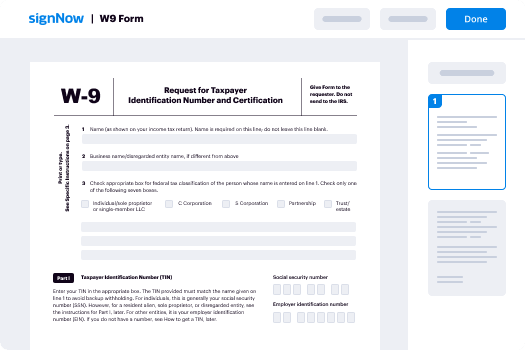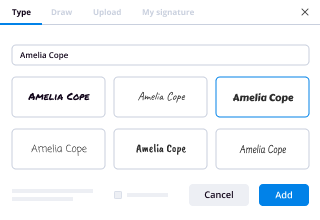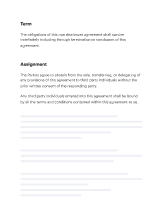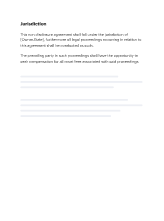DR -310 (4/18)
HOW TO CALCULATE CHILD SUPPORT
UNDER CIVIL RULE 90.3
This booklet contains i nstructions for the following forms :
DR -105 Petition for Dissolution of Marriage
(the child support sections)
DR -305 Child Support Guidelines Affidavit
DR -306 Shared Custody Child Support Calculation
DR -307 Divided Custody Child Support Calculation
DR -308 Hybrid Custody Child Support Calculation
April 2018
Alaska Court System
Forms Office
820 West Fourth Avenue
Anchorage, Alaska 99501
This booklet and the forms discussed in it are available on the
court system’s website: www.courts.alaska.gov/forms/index.htm
The “Fill -In” ve rsions of the forms do most of the calculations for you.
DR -310 ( 4/18)
© C opyright 1988, 1990, 1995, 1999, 2005 , 2007 , 2009 , 2010, 2013 , and 201 8 Alaska Court System
All rights reserved. Permission to reproduce the contents of this booklet, but not for profit, is hereby granted
to governmental and non -profit educational institutions. However, reproduction of any part of this booklet
for commerci al purposes without the express written permission of the Alaska Court System is strictly
prohibited.
DR -310 ( 4/18) 2
Table of Contents
Page
Introduction ................................ ................................ ................................ ................................ .......... 1
A. Instructions for DR -305 Affidavit and child support sections of DR -105 Petition .................. 1
1. Gross Income, Deductions and Net Income ................................ ................................ .. 1
2. Adjusted Annual Income ................................ ................................ ................................ 6
3. An nual Child Support Calculation ................................ ................................ ................. 6
4. Monthly Child Support Payment ................................ ................................ .................... 7
5. Health Care Coverage ................................ ................................ ................................ ..... 8
6. Monthly Child Support Payment (after adding or deducting
health insurance costs) ................................ ................................ ................................ .. 10
7. Request for Different Child Support Amount ................................ ............................. 10
8. Seasonal Income ................................ ................................ ................................ ............ 10
9. Signature Section of DR -305 Affidavit ................................ ................................ ....... 11
10 . Extended Visitation Credit. ................................ ................................ ........................... 11
Sample Filled -Out Form DR -305 ................................ ................................ ............................. 13
B. Instructions for Form DR -306, Shared Custody Child Support Calculation ......................... 16
Sample Filled -Out Form DR -306 ................................ ................................ ............................. 21
C. Instructions for Form DR -307, Divided Custody Child Support Calculation ........................ 22
Sample Filled -Out Form DR -307 ................................ ................................ ............................. 23
D. Instructions for Form DR -308, Hybrid Custody Child Support Calculation ......................... 24
Sample Filled -Out Form DR -308 ................................ ................................ ............................. 25
Civil Rule 90.3 with notes and commentary available at: https://public.courts.alaska.gov/web/rules/docs/civ.pdf
DR -310 ( 4/18) 3
HOW TO CALCULATE CHILD SUPPORT
Introduction
In divorce and dissolution cases involving children, child support must be paid, even if the parents
might agree otherwise. Support is paid on behalf of the children, not for the benefit of the parent.
In Civil Rule 90.3 , the Alaska Supreme Court set the guidelines that courts must follow to
determine the amount of child support. The rule and its commentary are available online at
https://public.courts.alaska.gov/web/rules/docs/civ.pdf .
To comply with the rule, each parent must provide information, under oath, about their income and
must attach documentation verifyi ng that information. See Civil Rule 90.3(e). In dissolution cases,
the information must be provided in the Petition form, DR -105 . In divorce cases, it should be
provided on form DR -305 , Child Support Guidelines Affidavit .
In both dissolutions and divorces, one more form must be attached if one of the following types of
child custody is chosen:
Shared Physical Custody. Attach DR -306 , Shared Custody Child Support Calculation. See
pages 16-21.
Divided Physical Custody. Attach DR -307 , Divided Custody Child Support Calculation.
See pages 22-23.
Hybrid Physical Custody . Attach DR -308 , Hybrid Custody Child Support Calculation. See
pages 24-27.
See page s 7-8 for an explanation of the four different types of physical custody .
A. Instructions for DR -305 Affidavit and child support section of DR -105 Petition
See the sample, filled -out DR -305 form on pages 13-15 .
1. Gross Income and Deductions .
First, make copies of your most re cent federal tax return (including W2) and pay check stubs
so you can attach them to your Petition or Affidavit . If you have other documents that verify
your income or deductions, attach copies of them too . Delete your social security number
and any financial account numbers from these documents. If you need to identi fy financial
accounts by number, use only the last three digits of the account number and the name of the
financial institution.
Second, che ck the box indicating whether the information you fill in will be monthly or
yearly. This is important in order to make the math calculations in the forms work correctly.
If your work is seasonal, show yearly income.
Third, fill in paragraphs A and B as follows :
Paragraph A --Gross Income.
In order to set child support, the court must try to predict the parents ' income for the
foreseeable future. The best indicator of that is usually the parent s' current income and most
recent past income. However, if you think your future income or the other parent’s future
income will be significantly different from current income, you should state expected future
income and attach an explanation justifying it to the court.
DR -310 ( 4/18) 4
Be sure to include all sources of income, whether the type of income is listed on the form or
not. Please read section III of the commentary to the rule for a list of many of the sources of
income you should consider. Do not include ATAP (Alaska Temporary Assistance
Program), SSI (Supplemental Security Income) , or Food Stamps.
"Gross wages" means wages before any money is deducted for taxes , retirement , or anything
else.
"Value of employer -provided housing/food/etc." means the dollar value of benefits like free
housing, meals, use of a car, COLA, BAH, BAS, etc. , that your employer gives you.
It should be listed if the amount is significant and reduces your living expense s. It does not
include employer -provided health insur ance benefits.
Note that if a person is voluntarily unemployed or underemployed, the court may determine
the person's potential income and use that to calculate child support. See paragraph (a)(4) of
the rule and section III.C of the commentary to the rule.
Paragraph B --Deductions.
Civil Rule 90.3(a)( 1) allows only a limited and specific number of deductions. See the
discussion of this portion of the rule in section III .D of the commen tary .
Keep in mind that it is your expected future expenses that the court must predict and that
these expenses may be different from your current expenses. For example, your federal
income taxes may be different because, rather than filing a joint return, you may be filing a
separate return as a "single person" or as "head of household." Also, child care expenses
may increase if the custodial parent has to work full -time.
Man datory Deductions . Most of the deductions are for mandatory items which reduce your
income and that you have no choice about paying, like taxes, union dues, man datory
retirement contributions, and the Supplemental Benefits System (SBS) contributions that
Alaska state employees are required to make.
Voluntary Retirement Contributions . A deduction is allowed for one optional, non -
mandatory item : “v oluntary contributions to a retir ement or pension plan or account in
which the earnings are tax -free or tax -deferred, except that the total amount of these
voluntary contributions plus any mandatory contributions [to a retirement or pension plan]
may not exceed 7.5% of the parent’s gross wages and self -employment income.” See
section III.D of the commentary for examples of some plans that qualify for voluntary
contributions. Note that the maximum total deduction for voluntary contributions to a tax -
free or tax -deferred retirement or pens ion pla n plus mandatory contributions combined is
7.5% of gross wages (or self -employment income). Do not include other sources of income
(such as investment income) in this calculation.
Parent ’s Health Insurance Deduction . You may deduct a limited amount of your own out -of-
pocket health insurance premiums . The total amount deducted may not be more than 10%
of your gross wages and self -employment income.
DR -310 ( 4/18) 5
Spousal Support (Alimony) in Other Cases.
One of the allowed deductions is for spousal support ordered in other cases and currently
being paid. To claim this deduction, there must be a court order or administrative order
requiring you to pay the spousal support and you must actually be paying it.
Child Support for Prior Children .
Another allowed deduction is for child support for prior children of a different relationship
that was ordered. This deduction may not be greater than the amount of support that would
be calculated under Civil Rule 90.3(a)(2). “Prior children” includes c hildren from a
different relationship who were born or adopted before the children in this case.
In addition, a deduction is allowed for “in -kind” support for prior children of a different
relationship calculated under Civil Rule 90.3(a)(1)(D). “In -kind ” means support contributed
for the prior children that is not a direct payment to the other parent or an agency.
For more information and some examples showing how the prior child deduction is
calculated , see the diagram called Calculating Prior Child Deduction online at:
https://public.courts.alaska.gov/web/forms/docs/d r-wfd -prior -child -deduct.pdf .
Parent’s Health Insurance.
Another allowed deduction is for a parent’s health insurance cost, up to 10% of wages and
self -employment income. The effective date for this deduction was April 16, 2018, and is
authorized by Civil Rule 90.3(a)(1)(F).
Paragraph C --Net Income .
Fill in the totals from the above two sections, then subtract Total Deductions from Total
Income to get Net Income.
Example s: Parent A has a mandatory retirement plan at work in which he is
required to contribute 1.5% of his gross wages. His gross wages are
$40,000 per year, so his mandatory retirement contribution is $600 per
year (.015 x 40,0 00). He can list $600 on the “Mandatory retirement
contribution” line . Parent A also set up an IRA (Indivi dual Retirement
Account) to which he contributes $ 3,000 every year. So, Parent A can
also take a “voluntary retirement deduction” of $ 2,400 per year.
Note: This is because the $ 3,000 he contributes is more than the
maximum amount of the deduction he is allowed. (His maximum
voluntary deduction is .075 x $ 40,000 = $ 3,000 , minus the $600
mandatory contribution.)
Parent B’s employer has no mandatory retirement plan for employees, but
does offer an optional 401(k ) Plan (a qualified plan under the IRS Code).
Parent B contributes $4,000 every year to her 401(k) account. Parent B’s
gross wages are $60,000 per year. Therefore, Parent B can take a
“voluntary retirement deduction” of $4,000 per year (because the $4,00 0
she contributes is less than the maximum amount of the deduction she is
allowed (.075 x $60,000 =$ 4,500)).
DR -310 ( 4/18) 6
2. Adjusted Annual Income .
Paragraph D . Adjusted Annual Income.
Fill in either subparagraph #1 or #2.
Fill in #1 if you checked the "monthly" box at the top of the previous page and provided
monthly income and deduction information. The amount to fill in is the final amount in
paragraph C (NET INCOME) multiplied by 12.
Fill in #2 if you checked the "yearly" box at the top of the previous page and provided
yearly income and deduction information. The amount to fill in is the same as the final
amount in paragraph C, the NET INCOME amount.
Then, on DR -305, fill in #3 as in structed o n the form .
3. Annual Child Support Calculation .
Find the Adjusted Annual Income for each parent which you calcu lated in the previous step.
If you are using the DR -105 Petition , fill in that amount in section VIII. A.1. a. Then, fill in
VIII. A.1.b. as explained on the form. To fill in section VIII. A.2 (or para graph E on the DR -
305 Affidavit ), multiply the Adjust ed Annual Income by whichever one of the following
numbers applies to your situation:
.20 if there is only one child involved in the divorce or dissolution
.27 if there are two children
.33 if there are three children, plus
.03 for each additional child
Example: If the Adjusted Annual Income for one parent is $20,000 and there are
two children, multiply $20,000 by .27 to get the amount to fill in on that
parent’s Annual Child Support line ($5,400).
If there were four children in the above example, the number to multiply
by would be:
.33 plus .03 = .36
The calculation would be:
$20,000 x .36 = $7,200
Adjusted Annual Income Over $126,000
In th e above calculation, the Adjusted Annual Income is limited to $126,000. However, the
court may sometimes order a higher child support amount. Civil Rule 90.3 (c)(2) states that
the court “may make an additional award only if it is just and proper, taking into account the
needs of the children, the standard of living of the children and the extent to which that
standard should reflect the supporting parent’s ability to pay.”
If you believe the amount of child support should be increased above the amount calculated
by using the $126,000 limit, you should use section VIII.A.6 on page 13 of the DR -105
Petition to explain why this should be done and what the child support amount should be.
Be sure to cross out the second sentence in the paragraph before writing you r explanation .
DR -310 ( 4/18) 7
Minimum Support Amount
If the result of the above multiplication is less than $600, write $600 on the “ANNUAL
CHILD SUPPORT” line instead of the result of the multiplication. Civil Rule 90.3(c)(3)
states that the minimum child support amount that may be ordered is $50 per month ($600
per year) with a few exceptions. (The exc eptions are: during “extended visitation” months
and in the final calculations in share d, divided and hybrid custody cases.) Find Civil Rule
90.3 and commentary VI.C. at: https://pub lic.courts.alaska.gov/web/rules/docs/civ.pdf
4. Monthly Child Support Payment .
You must check one of the four boxes (primary, shared, divided, or hybrid custody) and fill
in the lines. Which box you check depend s on your agreement about who will have
ph ysical custody of the children.
Deciding "physical custody" means deciding which parent the children will live with. 1
For purposes of child support, there are four possible physical custo dy arrangements:
a. Primary physical custody means the children live with one parent more than 70% of
the year. Check the primary custody box if this is your arrangement.
b. Shared physical custody means the children live with each parent for at least 30% of
each year. Check the shared custody box if this is your arrangement.
c. Divided physical custody means each parent has primary custody (as defined above)
of at least one child, and the parents do not share custody of any of their children.
Check the divided custody box if this is your arrangement.
d. Hybrid physical custody means at least one parent has primary custody of at least
one of the children, and the parents share custody of at least one of the children.
Check the hybrid custody box if this is your arrangement.
Remember that it is physical custody (where the children live) that matters for child support,
not legal custody .
1 Note that, as explained in your dissolution instructions, physical custody and legal custody are separate
concepts. Legal custody refers to a parent who is awarded legal custody has the right and responsibility to
decide questions regarding the child 's best interests (decision making custody). Physical custody refers to a
parent who has physical custody of a child when th e child resides with that parent .
DR -310 ( 4/18) 8
Box One: Primary Physical Custody .
In a primary custody arrangement, t he parent who will pay is the o ne who will have physical
custo dy of the children less than 30% of the year. The monthly amount owed is the Annual
Child Support amount for that parent (from the previous section) divided by 12 (months) .
Example: Parent B has primary physical custody of the three children of the
marriage. Parent A’s adjusted annual income is $25,000.
Annual child support Parent A will pay = $25,000 x .33 = $8,250
Monthly child support = $8,250 12 = $687.50
Box Two: Shared Physical Custody .
If you check this box, you will need to fill out form DR -306 , Shared Custody Child Support
Calculation , before you can fill in the child support amount. The instructions for this form
begin on page 16.
Box Three: Divided Physical Cus tody.
If you check this box, you will need to fill out form DR -307 , Divided Custody Child
Support Calculation , before you can fill in the child support amount. The instructions for
this form begin on page 22.
Box Four: Hybrid Physical Custody.
If you check this box, you will need to fill out form DR -30 8, Hybrid Custody Child Support
Calculation , before you can fill in the child support amount. The instructions for this form
begin on page 24.
5. Health Care Coverage .
The court is required by law to include a medical support order in the child support order if
health care coverage is available for the children at a reasonable cost. However, before
ordering that health insurance be purchased, the court must consider whether the children
are eligib le for health care services from the Indian Health Service or some other entity
(such as the military) at no charge . Although one parent may be ordered to purchase the
insurance, the cost of it must be shared between the parents . This is done by adjustin g the
amount of child support upward or downward. Civil Rule 90.3(d)(1).
For more information about how to calculate the cost of the children’s health insurance for
child support, see the diagram called Calculating the Cost of Child(ren)’s Health Insurance
online at https://pu blic.courts.alaska.gov/web/forms/docs/dr -wfd -child -health -ins.pdf .
Health Insurance for the Children
If the children are not eligible for services from the Indian Health Service or some similar
health coverage, and if health insurance for the children is available to either parent at a
reasonable cost (for example through your employer or union), the parent who has the
insurance available must purchase it. If both parents have such insurance available, you
must agree (or the court must decide) which one o f you will purchase it. The cost must be
divided equally between you unless you can show the court there is a good reason why it
should be divided differently. In section VIII.A.4.a on page 12 of the Petition (section G .1
of the Affidavit ), you must indicate who has such insurance available for the children , who
will purchase it , and how the cost will be divided between you.
DR -310 ( 4/18) 9
List only the cost to insure the children involved in this case. Do no t include the cost of
insuring a parent or any other chil dren who may live in the household. If there is no extra
cost to the parent to include the children in the parent’s insurance coverage, none of the cost
can be allocated to the children. If there is an extra cost to add dependants and the policy
covers d ependants in addition to the children and you do not know the cost for the children
alone, calculate the amount to put on this line as follows: Divide the monthly cost of the
insurance (the extra cost for the dependants) by the number of dependants insure d. Then
multiply that number by the number of children involved in this case. See Civil Rule
90.3(d)(1).
For more information about how to calculate the cost of the children’s health insurance for
child support, see the diagram called Calculating the Cost of Child(ren)’s Health Insurance
online at https://public.courts.alas ka.gov/web/forms/docs/dr -wfd -child -health -ins.pdf .
Example s: There are two children who will be the subjects of this child support order.
Parent A is paying support. The children are covered by the insurance policy
provided by Parent A’s employer.
1. Parent A pays $70 per month and employer pays $900 per month for the
policy that covers Parent A and all of Parent A’ s dependents. In this
example, t he cost does not increase if more children are added to the
coverage, and it does not decrease if there a re no dependents. Parent A is
required by the employer to have this insurance covering dependents.
Parent A does not have the option to select insurance covering himself
alone. The $70 counts as towards Parent A ’s own out -of -pocket health
insurance expe nse s which can be f actored into his adjusted income;
however , Parent A cannot adjust for the $70 a s part of the child’s
healthcare expenses.
2. Parent A’s employer lets him choose to buy either a policy covering just
himself or a policy covering himself and all of his de pendents. The
insurance costs Parent A $100 per month for just himself and $160 per
month if any dependents are covered. The cost for covering dependents
does not change if dependents are added or subtracted. Parent A selects
the “dependents coverage” policy and lists both children and his new
spouse as dependents (2 children + new spouse = 3 dependents) . The extra
cost for dependents is $60. The amount attributable to the children is $40
(2/3 x $60). Parent A can de duct half of that ($20) from his monthly child
support payment as part of his adjustment for the child’s healthcare
expense . (Note: Parent A may also deduct up to 10% of his gross wages
and self -employment income for his own health insurance premiu m.)
Children’s Uninsured Health Care Expenses
In section VIII.A.4.b on page 12 of the Petition (section G .2 of the Affidavit ), you must
describe your agreement about how you will share the cost of the child ren ’s health care
expenses that are not covered by insurance. Braces are one example of this type of expense.
Civil Rule 90.3(d)(2) requires the court to divide such expenses between the parents equally
unless a good reason is shown for dividing them differently or unless the expenses are mor e
than $5,000 in a calendar year. The rule requires that reasonable expenses exceeding $5,000
per calendar year must be allocated based on the parents ' relative financial circumstances
when the expenses occur. If, in the future, the children's uninsured expenses exceed $5,000
and you cannot agree on how to divide them, you will have to file a motion with the court.
If you believe that uncovered expens es under $5,000 should be divided unequally, check the
second box and explain why (for example, a substantial difference in the parent s' financial
circumstances). See section VII of the commentary about reimbursement procedure .
DR
-310 (4/18) 10 6.
Monthly Child Support Payment (after adding or subtracting the children’s health insurance costs).
In section VIII.A.5 on page 13
of the
Petition (section H of the Affidavit), you must either
increase or decrease the amount of child support owed, depending on who is purchasing the
children’s insurance and how the cost will be divided between you.
For example, if the obligor (the person paying child
support) will buy insurance for the
children costing $100 per month and you have agreed that the obligor will pay half the cost,
you should write $50 on line 5b and subtract it from the amount on line 5a in order to get the
net amount due on line 5d. If you instead agreed that the obligor w ill pay 70% of the cost,
then the amount to subtract on line 5b would be $30
.
Civil Rule 90.3(d)(1) requires that child support be adjusted only for insurance payments
that are actually made. Therefore, the child support order will state that if these payments
are not made, the monthly child support amount due will return to what it was before the
adjustment.
7. Request for Different Child Support Amount. This section applies to the DR-105 petition. It does not apply to the DR-305 affidavit.
You may fill in this section of the Petition if you believe the child support amount should be
different from what is shown in
section VIII.A.5 on page 13 of the Petition.
As stated in Civil Rule 90.3(c)(1), the court may increase or decrease the amount of child
support if the court finds that unusual circumstances exist that require the change "in order
to award an amount of support which is just and proper for the parents to contribute toward
the nurture and education of their children." The following are the examples of "unusual
circumstances" listed in the commentary to the rule: - especially large family size
- significant income of a child
- health or other extraordinary expenses
- unusually low expenses
See section VI.B of the commentary. In deciding whether there are "unusual circumstances"
which justify increasing or decreasing the amount of child support, the court must consider
the custodial parent's income as well as the non-custodial parent's incom e.
Before the court can change the child support amount based on unusual circumstances, the
court must be shown "proof by clear and convincing evidence that manifest injustice would
result if the support award" is not changed.
Please read the discussion of the "Unusual Circumstances" exception in section VI.B of the
commentary to Civil Rule 90.3.
8.
Seasonal Income If the income of the parent who will pay child support is seasonal (such as income from
commercial fishing), it may be easier for that parent to pay higher child support amounts
during the high-income months,
and lower amounts during the low-income months. On the
DR -305 Affidavit , check the “yes” or “no” box. On the DR-105 Petition, fill out this section
if both
parents agree that you want to do this. Note that this does not change the total annual amount due. It just allows different amounts to be paid in different months. See Civil Rule
90.3(c)(5) and c
ommentary section VI.F.
DR
-310 (4/18) 11 The court must not order seasonal differences in payments unless it finds that the burden of
budgeting for periods of unequal income should be placed on the obligee
(the person
receiving the payments) rather than the obligor (the person making the payments).
Also, the
court must not order it unless the obligee agrees to it. If unequal monthly payments are
ordered, they must begin in a “high payment” month, not a “low payment” month. Until a
“high payment” month occurs, the obli gor pays the average monthly amount.
9. Signature Section of DR-305 Affidavit. After filling in section I of the
Affidavit, you must sign it under oath in front of a notary
public, court clerk,
or other person authorized to administer oaths. Remember that when
you sign the affidavit under oath you are swearing that all the information you provided is
the truth. There is no charge when you get your affidavit notarized at the court. Bring a
photo ID with you to prove your identity. The information on the DR-105 Petition is also
being given under oath, but the signature section of that form is several pages later.
10. Extended Visitation Credit. Civil Rule 90.3(a)(3). If you checked box one, "primary custody," in section V
III.A.3 on page 11 of your Petition,
you may be able to make the following additional change in child support. In the primary
physical custody situation, the parent paying child support may
be allowed to reduce child support payments during any period when that parent takes physical custody of the children
for over 27 days in a row (consecutive days)
.
Example: Parent A is the obligor parent (the one who pays support) and Parent A
has physical custody of the children for the month of July (31 days). This might
allow Parent A to have an “extended visitation credit” for that time. Note: if the
children spend brief periods of time with Parent B during this extended visitation
period, including occasional overnights, the visitation credit may still be available to
Parent A. See section IV.B of the commentary for more information.
The court may (but does not have to) allow a reduction in child support for that period to
take into account the added expenses for the obligor parent and the reduced expenses for the
non -obligor parent.
Child support can only be reduced a maximum of 75% for an extended visitation period. It
cannot be eliminated because some expenses (such as rent) of the parent with primary
custody
will continue even when the children are not there. Note that paragraph (c)(1) of
the rule (allowing the court to make exceptions to the rule) applies to the calculation of this
credit just like it applies to other calculations in the rule. Example: The annual child support amount owed by Parent A (the obligor) is
$7,200. Parent A’s main income comes from commercial fishing , with
most income earned during the months of April through September.
Ordinarily, Parent A would be ordered to pay $600 per month ($7,200
12). However, the parents agree that, because of the seasonal nature
of Parent A’s income, Parent A should pay $ N I 000 per month from
April through September and $200 per month from October through
March (total annual amount = $7,200).
Note: If the order is entered during a low - payment month (October -
March), the court must order the average monthly payment ($600)
through March, then $1,000 payments from April through September,
and then $200 payments the following October – March.
DR
-310 (4/18) 12 To qualify for th
e extended visitation credit, the parents must specify in section V II
on page
10 of their Petition the dates of the extended visitation period, and the obligor parent must
actually take physical custody as agreed. Also, the court's order must be specific about th e
amount of reduction allowed.
If you want the child support payment to be reduced for a particular period of time because
of this "extended visitation credit,
" you must tell the court the amount of the reduction and
the months when it should occur. You can use section VIII.A. 10 on page 14 of the Petition
to do this.
DR
-310 (4/18) 13 SAMPLE DR-305 AFFIDAVIT (page 1 of 3)
DR
-310 (4/18) 14 SAMPLE DR-305 AFFIDAVIT (page 2 of 3)
DR
-310 (4/18) 15 SAMPLE DR-305 AFFIDAVIT (page 3 of 3)
DR
-310 (4/18) 16 B.
Instructions for Form DR-306 , Shared Custody Child Support Calculation You need to fill out this form only if you decide on a "shared physical custody" arrangement.
This means that each parent has the children at least 30% (almost 4 months
) of the year.
A specific visitation schedule showing the 30% custody must be written in your petition (or
divorce decree). Ordinarily, for a day of visitation to count towards the required 30%, th e
children must remain overnight with that parent. (30% would be 110 overnights.) However, the
court is allowed to use other methods of calculating the percentages of custody when counting
overnights does not give an accurate picture of the costs of custody for each parent. For
example, a court might find that the 30% requirement is met if a parent has the children for 24
hours on the weekend (noon Saturday to noon Sunday) and 9.5 hours each weekday (7:30 a.m.
to 5 p.m.). Although there is only one overnight each week in this example, the total number of
hours per week (71.5) is over 42% of the total number of hours in a week (168 hours). Please
read about Shared Custody in section V of the Civil Rule 90.3 commentary.
See the sample, filled-out DR-306 form on page 21.
Line 1.
Fill in the adjusted annual income amounts fo
r both parents from either:
- form DR-305, page 2, section D; or
- form DR-105, page 4, section II.D
Note: If the income amount is over $126,000, use $126,000
as the amount.
Line 2.
On the "x " line, fill in the decimal for the number of children. (Fill in ".20" if there
is only one child, ".27" if there are two, etc.)
Then calculate the "annual child support" amount for each parent by multiplying the amount
on line 1 by the decimal number you just filled in.
Note: If the result is less than $600, write $600 on the line instead of the amount calculated.
Line 3.
Fill in the percentage of time the father will have physical custody and the percentage of
time the mother will have physical custody. In order to show how you arrived at these
percentages, you will have to specify in section V
II
(the visitation section) on page 10 of
your Petition for Dissolution the dates when the children will reside with each parent. Example: Father’s adjusted annual income is $30,000.
Mother’s adjusted annual income is $20,000.
They will share custody of their one child.
FATHER MOTHER
Line 1 $30,00M $20,00M
Line 2 x .2M x .2M
$6,000 $4,000
DR -310 ( 4/18) 17
Note: These percentages can be changed by the court if the court finds that "the percentage
of time each parent will have physical custody will not accurately reflect the ratio of funds
each parent will directly spend on supporting the children." Civil Rule 90.3(b)( 1)(B) . If you
think the per centages should be changed in yo ur case, please bring this to the court's
attention by attaching a sheet to your form DR -306 explaining why they should be changed.
Line 4 .
On the father's line, write the percentage of time the mother will have custody.
On the mother's line, write the father's percentage.
Line 5 .
In both columns, multiply the amount on line 2 by the percent on line 4. (In general, this
shows the amount of each parent's income which that parent owes to the other parent for the
time the children live with the second parent.)
Example: Father has physical custody the first week in April (7 days), June 1
through August 31 (92 days) and December 26 through January 5 (11
days). T otal = 110 days or 30% of the year. (110 365 = .3013)
Mother has physical custody the rest of the year (70%).
Fill in 70% on mother's line and 30% on father's line.
FATHER MOTHER
Example: Line 3. 30% 70%
Line 4. 70% 30%
Example: Assume the following:
Father's annual child support amount is $6,000 and he has custody 30%
of the time.
Mother's annual child support amount is $4,000 and she has custody
70% of the time.
FATHER MOTHER
Line 2. $6,000 $4,000
Line 3. 30% 70%
Line 4. 70% 30%
Line 5. $4,200 $1,200
(6,000 x .70) (4,000 x .30)
DR -310 ( 4/18) 18
Line 6 .
Subtract the smaller amount on line 5 from the larger amount. Write the difference on line 6
in the column with the larger line 5 amount. Leave the other column blank.
The person with the larger line 5 amount is the person who will pay child support. The
amount to be paid will be calculated in the next step.
Line 7 .
Multiply the amount on line 6 by 1.5. The line in one column will be blank.
As explained in section V.B of the commentary, the reason the rule requires you to multiply
by 1.5 is because it is assumed that the total funds of both pa rents necessary to support the
children will be substantially greater when physical custody is shared than when it is not.
Line 8 .
The person with an amount written on line 7 is the person who will pay child support (the
"obligor"). However, the rule requires that the support amount not exceed the amount the
obligor would have owed if it was a “primary custody” situation. Therefore, you must
compare the line 7 amount with the amount on that person's line 2 (the "primary custody
amount"). Write the smaller of line 7 or line 2 on line 8.
Example: Using the figures in the above example:
FATHER MOTHER
Line 5. $4,200 $1,200
Line 6. $3,000
(4,200 - 1,200)
Example: Using the figures in the above example:
FATHER MOTHER
Line 6. $3,000
Line 7. $4,500
($3,000 x 1.5)
DR -310 ( 4/18) 19
Note: For this comparison, you can reduce the actual amount on line 2 by whatever
"extended visitation credit" would be appropriate if you had elected primary custody
instead of shared custody. The "extended visitation credit" is explained in section 10 on
page 11.
The extended visitation credit cannot be used for any other purpose if shared custody
is elected.
Line 9 .
Fill in the number of months in which payments will be made. This will be 12 unless the
obligor parent (the one who must pay support) will have physical custody for periods of 30
consecutive days or more. If the obligor will have such periods of “extended custody,” the
obligor can choose to either make payments in all 12 months or make payments only in
those months when he/she does not have “extended custody.” The annual amount due does
not change. So, i f the obligor chooses not to make payments during the “extended custody”
months, he/she will pay more during the other months. (The annual amount due will be
divided by a smaller number of months, so each payment will be higher than it would have
been if the annual amount were divided by 12.) If the obligor chooses to do this, fill in on
line 9 the number of months when the obligor parent will not have extended custody
(custody for periods of 30 consecutive days or more).
Example: Using the figures in the above series of examples:
FATHER MOTHER
Line 1. $30,000 $20,000
Line 2. $6,000 $4,000
Line 7. $4,500
Line 8. $4,500
Example: In the example above, the amount for the father on line 2 is $6,000.
However, the father will have physical custody of the children for the
entire months of June, July and August. If these pa rents were calculating
child support as if the mother had primar y custody rather than using the
shared custody calculations, the father would have been entitled to an
extended visitation credit up to 75% of the amount owed for the 3 months.
The monthly amount owed would have been:
$6,000 12 = $500
The maximum credit the court might allow per month is $500 x .75 =
$375. So, the credit for the 3 months = 3 x $375 = $1125.
Therefore, for purposes of this comparison of line 2 and line 7, these
parents could use a revised line 2 amount of $6,000 - $1125 = $4875 .
In this example, the credit will not make a difference because line 7
($4,500) is still smaller than the reduced line 2.
DR -310 ( 4/18) 20
Line 10 .
Fill in the months, if any, when payments will not be made because the obligor parent has
custody for a 30 or more consecutive day period.
Then fill in the monthly amount to be paid. Calculate this by divid ing the annual amount the
obligor owes ( line 8 ) by the number of months in which payments will be made (line 9).
Then check the box indicating who the obligor is: mother or father (Parent A or Parent B) .
Failure to Take Custody at Least 30% of the Time .
If a parent does not take physical custody of the children at least 30% of the year, as agreed,
the other parent can file a motion with the court to modify the support order. The
commentary to the rule indicates that in this circumstance, the support amou nt should be
recalculated using the formula applicable in primary physical custody situations. See
section V.C. of the Commentary . Usually, the motion will request a change in both the
custody order and the support order. But, even if the court does not change the custody
order, it should change the support order and explain the reason for it. However, both the
rule and the commentary make it clear that child support should not be modified if the
reason for failing to take physical custody was because t he other parent refused to permit it.
The DR -700 Motion Packet can be used to file this motion. The packet is available at the
court and on the court system’s website.
Signatures & Transfer of Information to Other Forms
After filling in line 10, sign the form and print your name beneath your signature. Then
copy the information from paragraph 10 onto either:
- form DR -305, Affidavit , page 2, section F.2; or
- form DR -105, Petition , page 11, section VI II.A.3.b.
Attach form DR -306 to your Petition or Affidavit .
Example: The father in the above example has physical custody for an extended
period from J une 1 through August 31 in addi tion to two other shorter
peri ods. He will not pay child sup port during the three months (June,
July and August) the children live with him. Therefore, the number of
monthly payments on line 9 will be 12 - 3 = 9 .
Example: Continuing the example used above, the months in which pay ments will
not be made are: June, July & August
The monthly amount to be paid is: the annual amount from line 8
($4,500) divided by the number on line 9 (9 months).
$4,500 9 = $500
The $500 is to be paid by the father each month except June, July and
August.
DR
-310 (4/18) 21 SAMPLE DR-30
6 SHARED CALCULATION
DR
-310 (4/18) 22 C.
Instructions for Form DR-307, Divided Custody Child Support Calculation You need to fill out this form only if you decide on a “divided physical custody”
arrangement (meaning each parent has primary physical custody of at least one of the
children and you do not share custody of any of the children).
You have
“primary ” physical custody of a child if the child lives with you more than 70% of
the year.
The rule on calculating support in a divided custody situation is Civil Rule 90.3(b)(2). See
the commentary about the divided custody rule (section V.D).
In a “divided” custody situation, support is calculated by doing two “primary custody”
calculations to determine what each parent owes the other and then subtracting the smaller
amount from the larger. (See the explanation of primary custody calculations on pages 7-8.)
The sample, filled-out DR-307 form on page 23 assumes the following facts:
There are three children in the family.
Father will have primary custody of Jason (age 5), and Jessica (age 7).
Mother will have primary custody of Joshua (age 2).
Father’s adjusted annual income is $20,822.
Note: If Father’s adjusted annual income was more than
$126,000, the amount to
write on line 1 for father would be $126,000. According to Civil Rule 90.3(c)(2) ,
income is usually capped at $126,000
for child support calculations, even if the
parent earns more than that.
Mother’s adjusted annual income is $36,960.
No te: The minimum amount of annual support that may be ordered is $600. If the
amount of support as calculated under the primary custody rule (Civil Rule 90.3(a))
is less than $600 , the minimum annual support amount under Rule 90.3(c)(3) would
be $600. If that were true in this case, $600 would be written on line 4. In this case
however , mother’s annual support would be $9,979, which is well above the
minimum amount.
After calculating the child support amount on the DR-307 form, the last step is to decide
whether this result is “just and proper.” The rule on divided custody
states that divided
custody is an “unusual circumstance” and, therefore, the court must consider whether the support amount should be varied under paragraph (c)(1) of the rule. If you believe the
amount
is not “just and proper,” you must explain your reasons for believing this to the
court. You can do this in
section VIII.A.6 on page 13 of the Petition for Dissolution . See the
discussion of the “unusual circumstances” exception in paragraph 7 on page 10 of this
packet.
DR -310 ( 4/18) 23
SAMPLE DR -30 7 DIVIDED CUSTODY CALCULATION
DR -310 ( 4/18) 24
D. Instructions for Form DR -308 , Hybrid Cu stody Child Support Calculation
You need to fill out this form only if you decide on a “hybrid physical custody” arrangement
(meaning at least one parent has primary physical custody of at least one child of the
relationship and the parents share physical custody of at le ast one child of the relationship).
A parent has “primary ” physical custody of a child if the child lives with that parent more
than 70% of the year.
Parents “share” physical custody of a child if the child lives with each parent “for a period
specified in writing in th e custody order” of at least 30% of the year. Civil Rule 90.3(f).
The rule on calculating support in a hybrid custody sit uation is Civil Rule 90.3(b)(3).
The “hybrid” calculation includes both “primary” custody calculation s, and “shared”
custody calculations (discussed in the previous pages of this booklet), but does not use the
standard percentages from paragraph (a)(2) of the rule.
Read section V.E. of the commentary for a step -by -step explanation of the calculation and a
sample calculation.
The sample, filled -out DR -308 form on pages 25-27 assumes the following facts:
There are three children in the family , Jason, Joshua, and Jessica .
Father will have primary custody of Jason (age 5) .
Moth er will have primary custody of Joshua (age 2) .
Th e parents will share custody of Jessica (age 7) . The shared child (Jessica) will be
in mother’s physical custody 40% of the time and in father’s 60% of the time.
Father’s adjusted annual income is $ 20,822 .
Mother’s adjusted annual income is $ 36,960 .
After calculating the child support amount on the DR -308 form, the last step is to decide
whether this result is “ju st and proper.” The rule on hybrid custody states that hybrid
custody is an “unusual circumstance” and, therefore, the court must consider whether the
support amount should be varied under paragraph (c)(1) of t he rule. If you believe the
amount is not “j ust and proper,” you must explain your reasons for believing this to the
court. You can do this in section VIII.A.6 on page 12 of the Petition for Dissolution . See
the discussion of the “unusual circumstances” exception in paragraph 7 on page 10 of this
packet .
DR -310 ( 4/18) 25
SAMPLE DR -30 8 HYBRID CUSTODY CALCULATIO N (page 1 of 3)
DR -310 ( 4/18) 26
SAMPLE DR -30 8 HYBRID CUSTODY CALCULATION (page 2 of 3 )
DR -310 ( 4/18) 27
SAMPLE DR -30 8 HYBRID CUSTODY CALCULATION (page 3 of 3 )
















